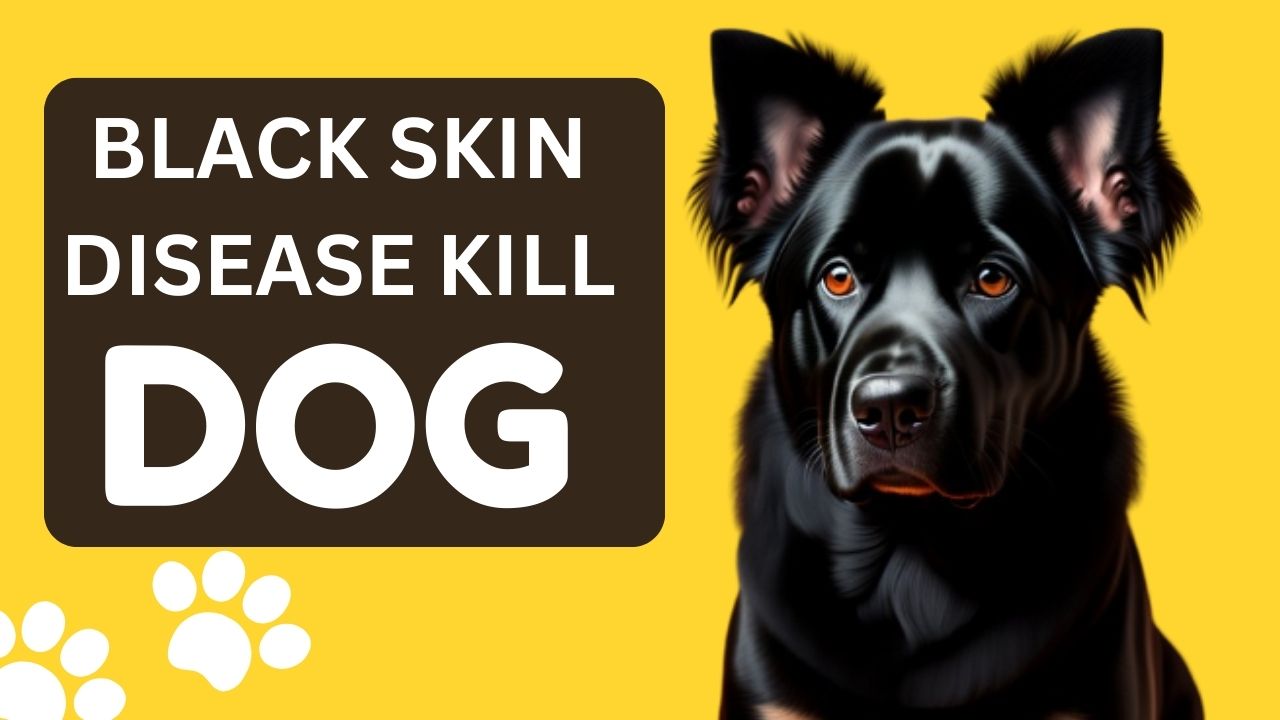Introduction
In this article, we will explore can black skin disease kill a dog. We will dive deep into the mysteries of this peculiar disorder and uncover the truth behind its potential dangers.
So fasten your seatbelts and get ready to explore the world of Canine Alopecia X like never before.
Have you ever noticed a dog with patches of black, hairless skin? It may look alarming, even downright bizarre.
But what if I told you that this seemingly harmless condition, known as Canine Alopecia X or black skin disease, could potentially be fatal for your furry friend?
It occurs when the hair follicles stop producing new hairs or produce only weak ones. The exact cause of this condition is still unknown, but it is believed to have genetic and hormonal factors.
Although black skin disease does not pose a direct threat to a dog’s health, it can lead to secondary problems like bacterial or fungal infections if left untreated.
Therefore, it is important for pet owners to seek veterinary care and follow proper grooming practices to manage this condition effectively.
Table of Contents
What is Canine Alopecia X?
Canine Alopecia X, also known as Black Skin Disease or Coat Funk, is a condition that affects certain breeds of dogs, particularly Nordic breeds like Pomeranians, Chow Chows, and Alaskan Malamutes.
It is characterized by progressive hair loss and changes in the pigmentation of the skin.
The exact cause of Canine Alopecia X is still unknown, but it is believed to be a hormonal imbalance that affects the dog’s ability to grow and maintain a healthy coat.
The condition typically starts with hair thinning on the back end of the dog and gradually progresses to complete hair loss in affected areas.
While Canine Alopecia X can be distressing for both dogs and their owners, it is not life-threatening or painful for the dog.
Treatment options include hormone therapy and dietary changes aimed at improving overall coat health. However, it’s important to consult with a veterinarian for an accurate diagnosis and appropriate treatment plan tailored to your dog’s specific needs.
Can Canine Alopecia X be Fatal?
The positive aspect is that Canine Alopecia X is not a life-threatening ailment.
Dogs suffering from this disorder usually do not succumb to it. Nevertheless, there are certain factors to take into account:
Secondary Infections: Canine Alopecia X increases the susceptibility of dogs to skin infections, which, if not treated, can result in complications and impact the overall well-being of the dog.
Psychological Impact: Dogs can experience significant psychological distress due to hair loss, leading to increased anxiety and stress levels that can greatly affect their overall well-being.
Underlying Causes: Although Canine Alopecia X is not fatal, it may indicate the presence of other health problems. Hence, it is crucial to determine and resolve the underlying cause to maintain the dog’s overall health.
Managing Canine Alopecia X
Even though Canine Alopecia X might not pose a risk to the dog’s life, it is essential to offer proper care and treatment to enhance the affected canine’s well-being.
Veterinary Evaluation: If you have any concerns about your dog experiencing Canine Alopecia X, it is advisable to seek advice from a veterinarian. They have the expertise to identify the condition and eliminate other possible reasons for hair loss.
Skin and Coat Care: Taking proper care of your skin and coat is crucial. To manage the condition and prevent skin infections, your veterinarian might suggest using medicated shampoos, conditioners, or topical treatments.
Nutritional Support: To ensure your dog’s skin and coat stay in top condition, it is crucial to provide them with a well-rounded diet containing the necessary nutrients. Specific dietary adjustments or additional supplements may be advised by your veterinarian.
Stress Reduction: It is crucial to minimize stress in your dog’s life. Creating a soothing and cozy atmosphere can contribute to reducing the psychological anguish linked to hair loss.
Regular Check-ups: Regular veterinary check-ups are crucial for tracking the development of the condition and modifying the treatment plan as needed.
Conclusion
In conclusion, while black skin disease in dogs can be concerning and frustrating for both pet owners and veterinarians, it is not typically a life-threatening condition.
It is important to provide proper care and treatment for dogs with black skin disease, such as regular grooming, a balanced diet, and appropriate medical interventions. Additionally, understanding the underlying causes of the condition, such as hormonal imbalances or genetic predispositions, can help in managing and preventing future occurrences.
By staying informed and working closely with veterinary professionals, dog owners can ensure the well-being of their pets and provide them with the best possible quality of life. Remember to consult a veterinarian if you notice any changes in your dog’s skin or overall health.
Also, Read this article. How to treat dog periodontal disease at home?










